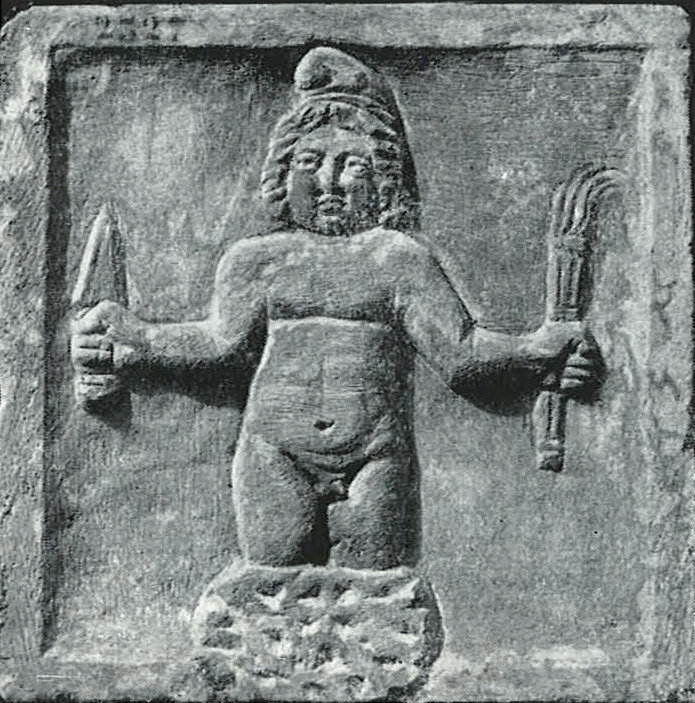Mithras petrogenitus of the Esquilino
The full article is reserved for our members.
Log in or create a free account to access the entire site.
Mithras' birth from the rock; visible from the knees. The youthful god is in Phrygian cap; a knife in his upraised r.h.; a flaming torch in the I.h.
Visconti, l.c., 211 and PI. XXI, 2; Lanciani, o.c., 167; Maionica, Felsengeburt, No. IV; MMM II 203 No. 18 and fig. 28; Roscher, Myth. Lex., s.v. Mithras, 3046 and fig. 4; RRRIII, 1956; Gressmann, Or. Rel., 154 fig. 58. See fig. 100.
